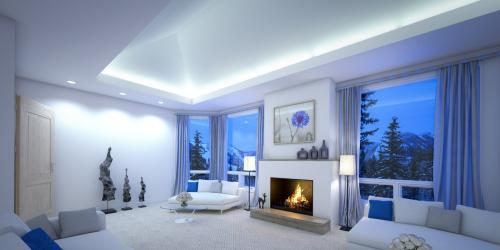Hunting for wasps
The eye on the planet
At the School of Recovery,
Other schools set an example
A High Environmental Quality School
It is a school camped on a hill at Saint-Hilaire-le-Châtel, in the Orne , in the middle of fields, and built of wood. Inaugurated in 2004, it welcomes students from the villages of Saint-Hilaire and Sainte-Céronne. "Before, there were three old school sites for these two villages," explains Jean-Antoine Gadea , deputy mayor of Saint-Hilaire, the origin of the project. We had to rebuild, so we built a school that meets the High Environmental Quality approach, which aims to limit the impact of a building on the environment , design an energy-efficient building and ensure healthy living conditions. inside. "Parents and teachers were involved in the adventure, and the HQE approach inspired Yohann Brossard , the director, with eco-gestures , a way of living and a pedagogical project: to teach this generation of children reflexes of eco-citizens . "When you are 8 or 10 years old," he explains, "it goes without saying, we want to save nature, we are in wonder. But when one grows up, these good feelings are lost if they have not been relayed by knowledge. Ecology , you must teach the basics early! "
The parents acknowledge that their children harass them so that they stop the engine at a standstill, do not heat the heater thoroughly ... Mateo, 6 years old, has gone home with a mission: count low energy bulbs .. his parents are asked to replace some before the next count! Many have thus changed their habits. "Getting the government to accept the construction of a green school in the countryside is a challenge," concludes Jean - Antoine Gadea . But it is important that the village schools remain so that rural France continues to exist. It is around a school that life articulates itself, it is she who keeps living here, that one settles there. School marks childhood, we have an affective bond with it, it is part of your memory. "
Hunting for wasps
Haro on the waste of water , electricity , paper ! This week, Elise and Lucas serve "garbage" and "light". They proudly display their selective sorting baskets, reserved for paper, made of cardboard and newspaper collages. Naturally, no one in the class will throw a sheet of white paper over the back, a failing photocopy, or even an outdated poster. They also have a mission to think about turning off the lights.
An ecological building
The stunning architecture of the Saint - Hilaire - Sainte - Céronne school, signed by Hubert Masson , blends into this Perche landscape. At the rear, some of the buildings are underground and, emerging from the lawn, large portholes provide a lighting system by skylight . In front, vast bays illuminate the ground floor classes. This school was built of local materials and natural : untreated wood, assembled without glue, for roof tiles (made by a student dad, carpenter), as well as for the framework of the yard. On the floor, linoleum linen , walls, hemp for insulation , clay-based paints , chemical-free. Of course, buildings are energy efficient . The toilets (functioning in the rainwater recovered), the dormitory of the small ones, the room of motricity are thus incrusted in the soil: the effect "cellar" gives rooms cool in summer and easy to heat in winter . The large bays of the classrooms make it possible to limit the use of artificial light .
The eye on the planet
In CM1 / CM2, Cyrielle and Olivia prepared a debate on the topic of waste and brandished one of My Daily newspaper titled "110,000 tons of scattered waste". It discusses the problem of waste in Naples at the beginning of the year. "How did they get there?" Demanded Theo. The teacher then widened the debate: "How to limit our waste ? The discussion comes alive.
The Environment Committee
There are 12 students, from CP to CM2, to be part of the Environment Committee, which meets regularly to reflect on how to apply sustainable development in school life . So, the trash cans reserved for the paper and which were made by the children, it is them! We also owe them the idea of blue stickers with the logo of the school glued to the switches: we press on the pellet to turn off the light when the sun pierces ... Should not heat the planet! They also developed a beautiful game of society on the forest, carved in an oak stretch. Today, the young elected representatives met because the compost boxes they asked for the mayors of Saint-Hilaire and Sainte-Céronne arrived. They must be put in place to store biodegradable waste from the canteen , which will become potting soil for the future school garden. The Committee's next objective is to set up a " pedestrian bus ", a pedestrian school pick-up system to prevent the pollution of micro-commuting by car.
At the School of Recovery,
In this green school , nothing is lost, we even recover the falls of pencil sharpeners that are used for collages during the plastic art sessions. A course in which rockets, turtles or humans are created from recycling materials : cork stoppers, egg cartons, pine cones, walnut shells, fabrics, etc. In paper recycling workshops , manufactures the invitation cards for the end-of-year party and, for the SVT lesson on air, small cars with box of matches, straw and balloon of balloon: the air of the balloon inflated serves as engine and propels the craft. Ready to invent the green car of tomorrow?
Other schools set an example
In Limeil-Brévannes , in the Val-de-Marne, the Jean-Louis-Marquèze school is the first "zero energy". Technical performance. The building signed by the architect Serge Goldstein produces as much energy as it consumes, minimizing its needs (over-isolation, orientation South ...) and supplying its electricity with photovoltaic cells on the roof . Its more: floors and ceilings in glass pavilions to take full advantage of the light of day, gardens cultivated by the children, a patio entrance hall planted and a courtyard of recreation on the roof terrace ... Tel . : 01 45 10 09 14.
In Languedet , Ille-et-Vilaine, the school has been renovated according to the HQE approach (double insulation, rainwater recovery, solar panels, etc.). At the canteen, we eat organic . And each evening, students take the electricity meter to see what was consumed by the school and what was produced by the photovoltaic cells . Such. : 02 99 69 95 20.


